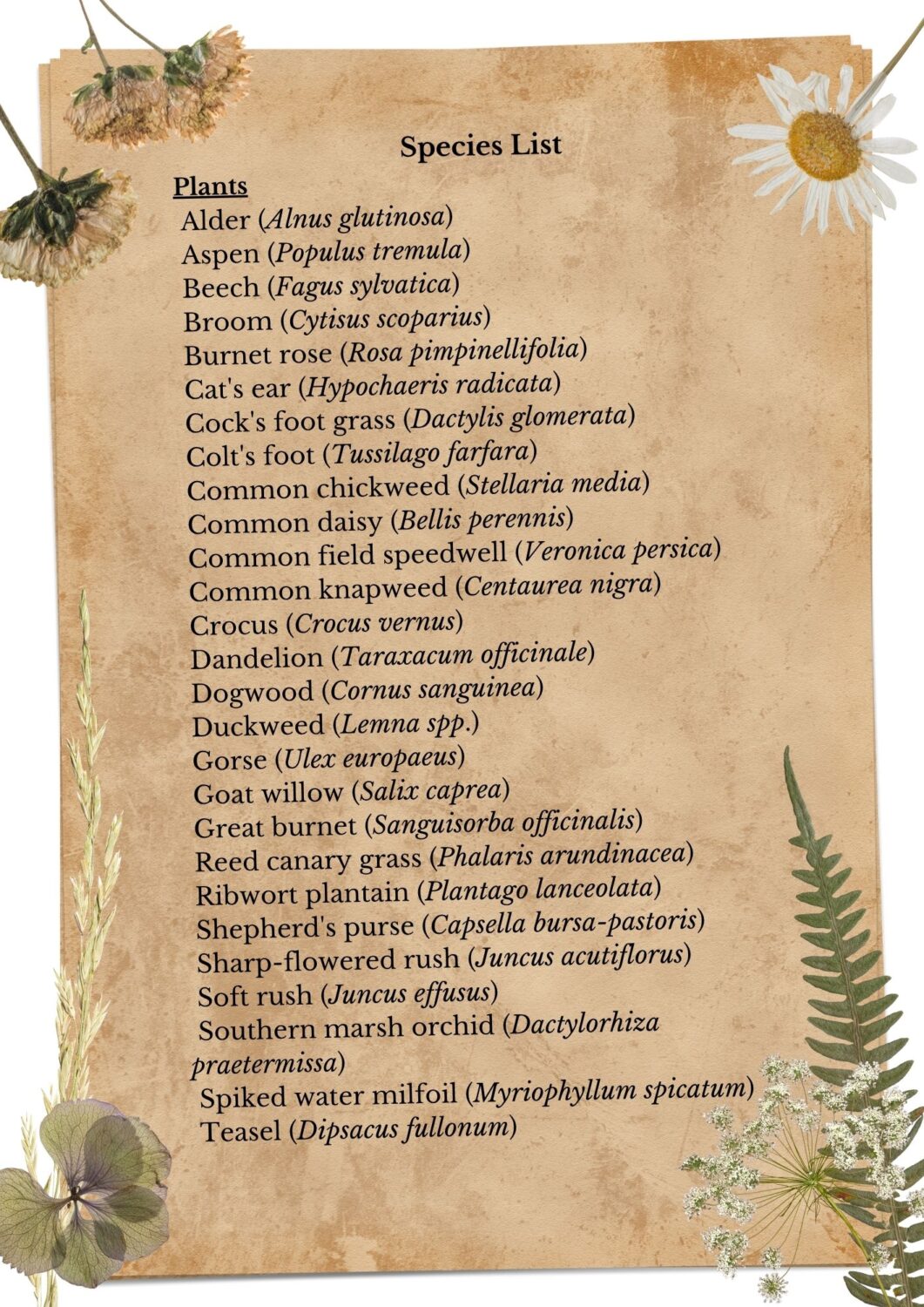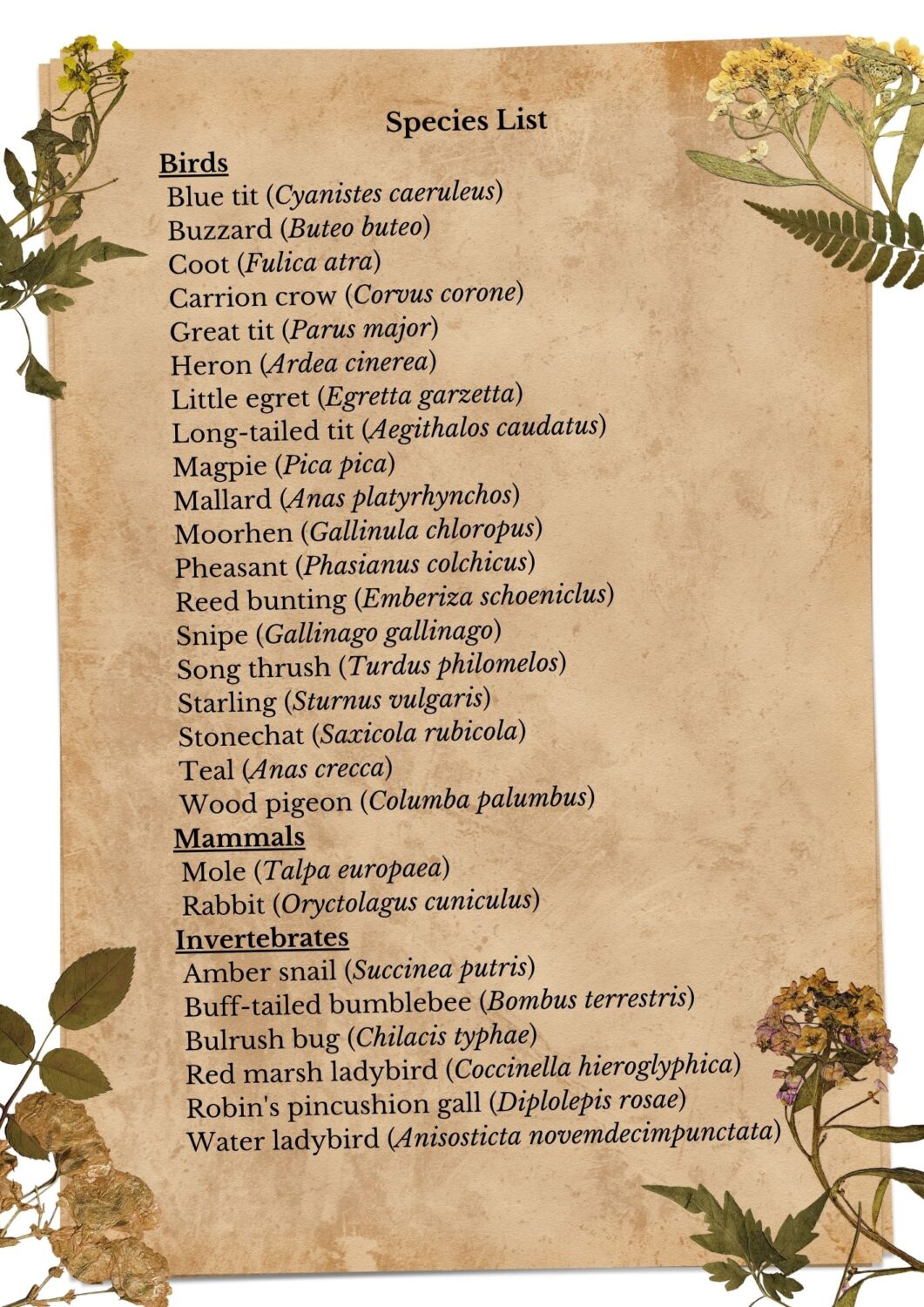The latest instalment of the ‘Walking the Ouse Burn’ series took me to Great Park – my first visit to this fascinating stretch of the Burn. I’ll admit, my expectations weren’t sky-high. After all, Great Park is one of the North East’s largest housing developments, built over what was once green belt land and part of the Ouse Burn floodplain. However, I was in for a real surprise.
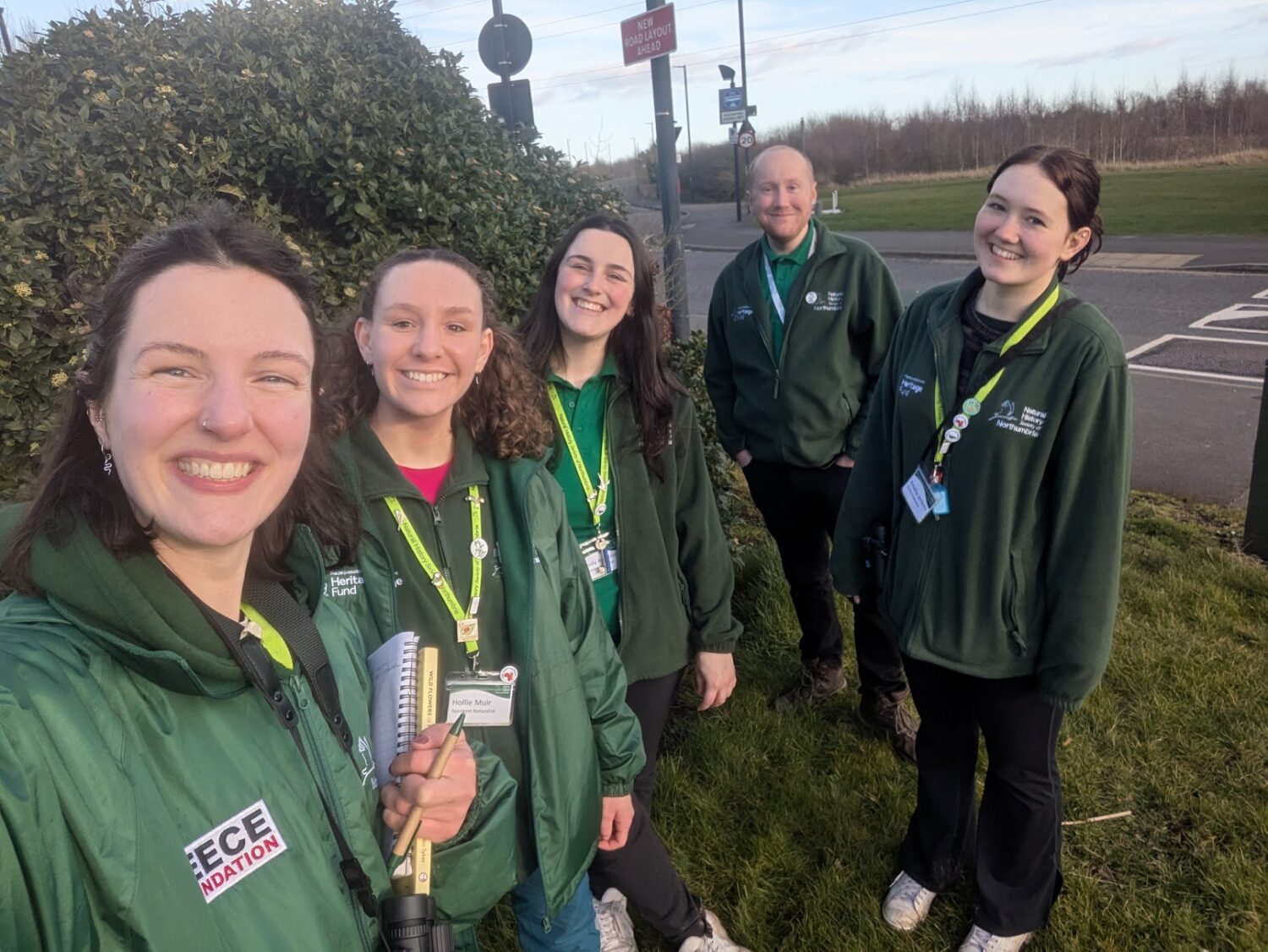
Woven through the development is a network of SuDS (Sustainable Drainage System) ponds and extensive reedbeds. These clever systems reduce surface water flooding and improve river health by storing runoff and slowly releasing it into the Ouse Burn. In doing so, they filter out sediment and heavy metals, while also creating brilliant habitat for amphibians, birds, fish, invertebrates and mammals. A fantastic example of how urban planning and ecology can work together!
James led us to a stand of Bulrush, where we quickly found something new for me – a Bulrush Bug! This small and muted little insect is found throughout much of the UK but is less common in the north. Bulrush Bugs often pair on the heads of Bulrush plants and overwinter inside them – as this one was! As we kept looking, we also found what we came for – not one, but two Water Ladybirds! These stunning beetles change colour with the seasons, turning from bright red in the summer to a muted beige to camouflage among the reeds in which they overwinter.
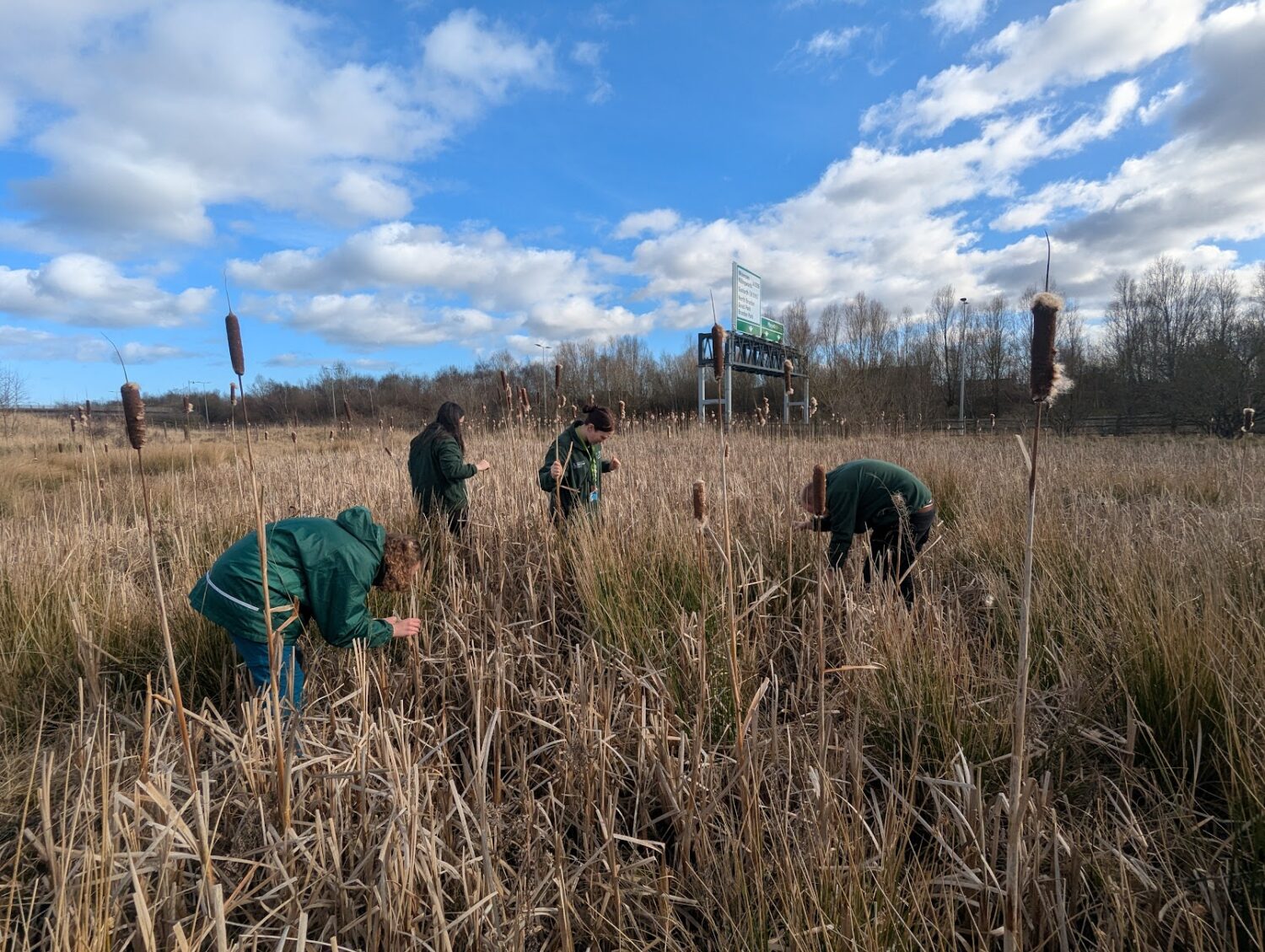
Though most wildflowers were still waiting for warmer weather, we spotted some cheerful Coltsfoot blooming. Its bright yellow flowers appear well before its hoof-shaped leaves, and it was once a traditional remedy for coughs and sore throats – the Latin name for Coltsfoot Tussilago comes from tussis, meaning cough. Apparently, the leaves were smoked like Tobacco – although this likely wouldn’t immediately scream ‘good for lungs’ to us as a modern audience!
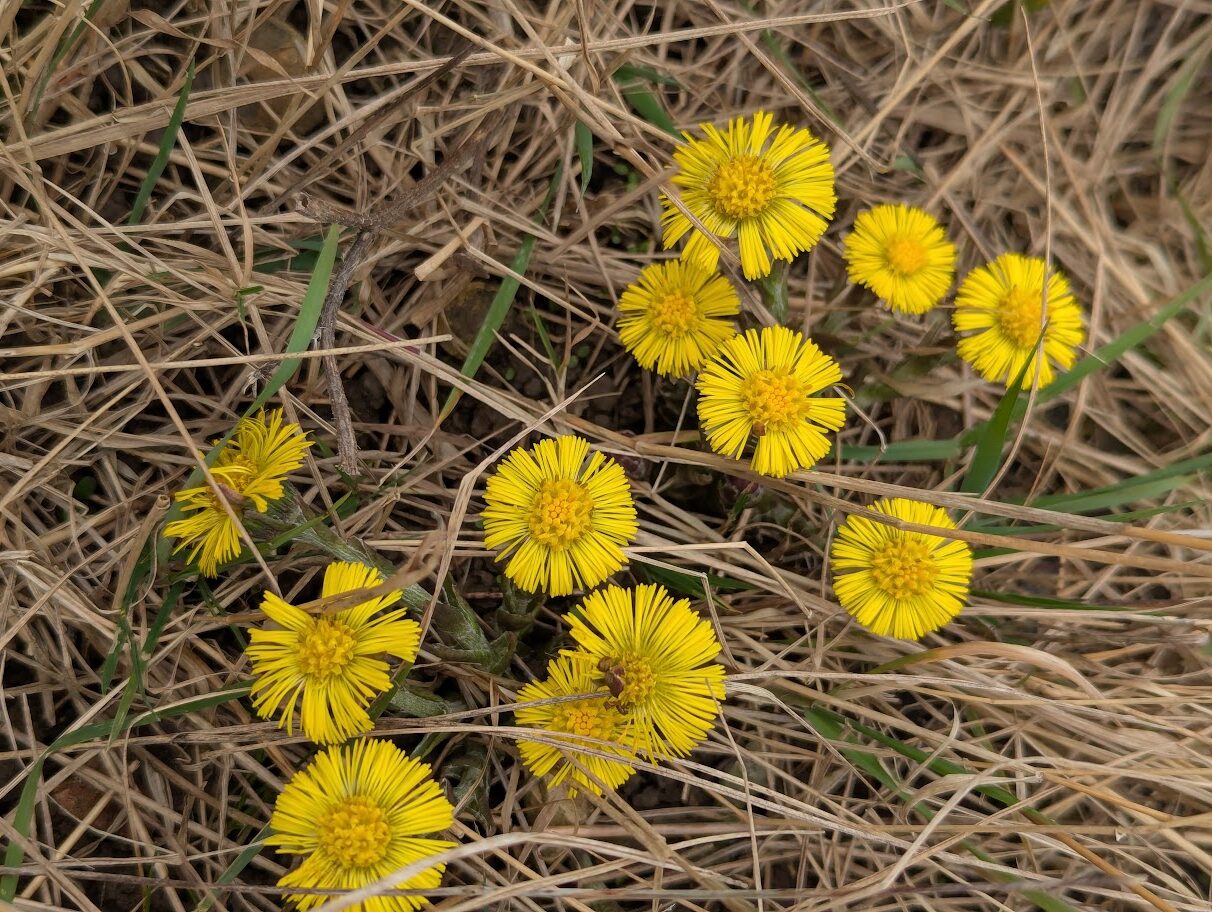
Further along the trail, we found some wonderful galls. Robin’s Pincushion, a fuzzy red growth caused by a tiny gall wasp (Diplolepis rosae), is often found on wild rose. Each gall houses dozens of larvae that feed through the winter and emerge in spring. This Gall has a rich history in use in folk medicine – thought to cure everything from Whooping Cough to rheumatism to balding!
We also spotted Oak Apple Galls, formed by another gall wasp (Biorhiza pallida), each with multiple chambers containing the developing young. Oak Apple Galls have a fascinating history. In Celtic mythology, the oak tree symbolises strength and protection, and oak apples were thought to hold magical properties capable of repelling evil spirits. Later, during the English Civil War in the 17th century, oak apples took on political significance, becoming a symbol of loyalty to the monarchy. Supporters of King Charles II wore them to show their allegiance, especially on his birthday, May 29th, which became known as Oak Apple Day. The occasion was marked by festive celebrations and the prominent display of oak apples as emblems of royalist support. Although largely forgotten, some parts of the UK still celebrate Oak Apple Day!
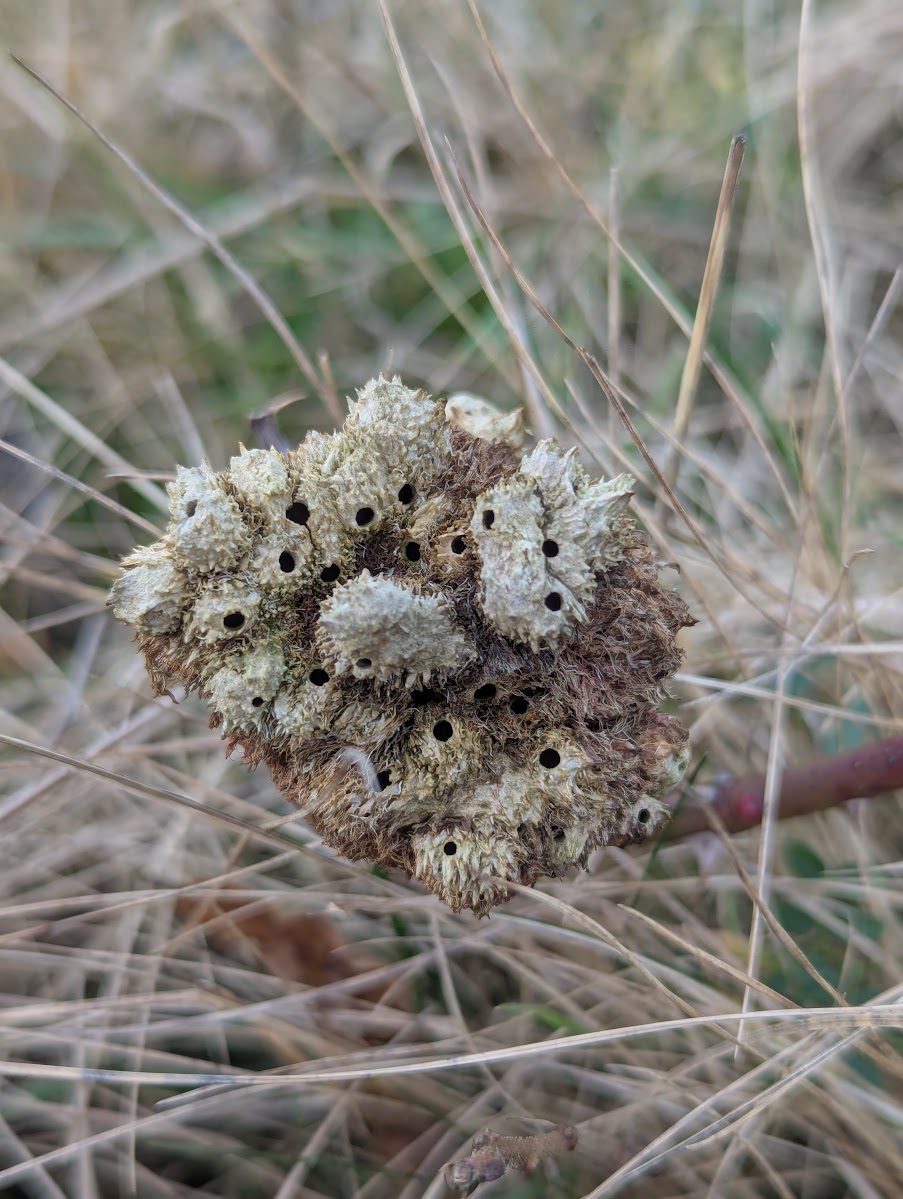
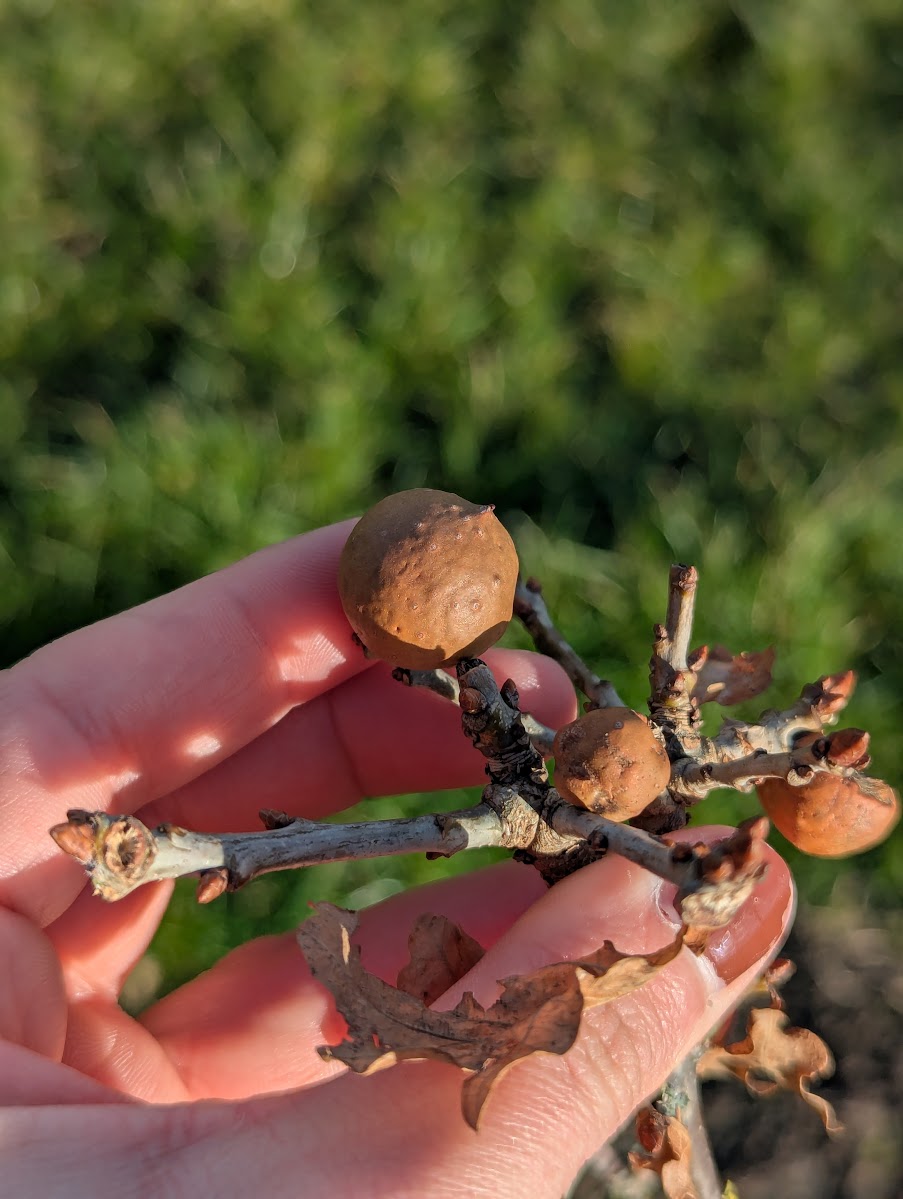
As we continued along the reedbeds, we were struck by the incredible abundance of birdlife we found. Among the highlights was a Little Egret, elegantly stalking through the shallow water. We watched its fascinating hunting technique – using its bright yellow feet to stir up the muddy bottom and flush out prey, bringing them within striking distance.
Little Egrets were once a common sight in the UK but disappeared by the 16th century, primarily due to overhunting for their meat and for their delicate plumes, which were highly sought after for fashionable hats. However, they’ve made a remarkable recovery. After their first recorded UK breeding on Brownsea Island in 1996, their population and range have steadily grown. Breeding was first confirmed at our very own Gosforth Nature Reserve last year in 2024!
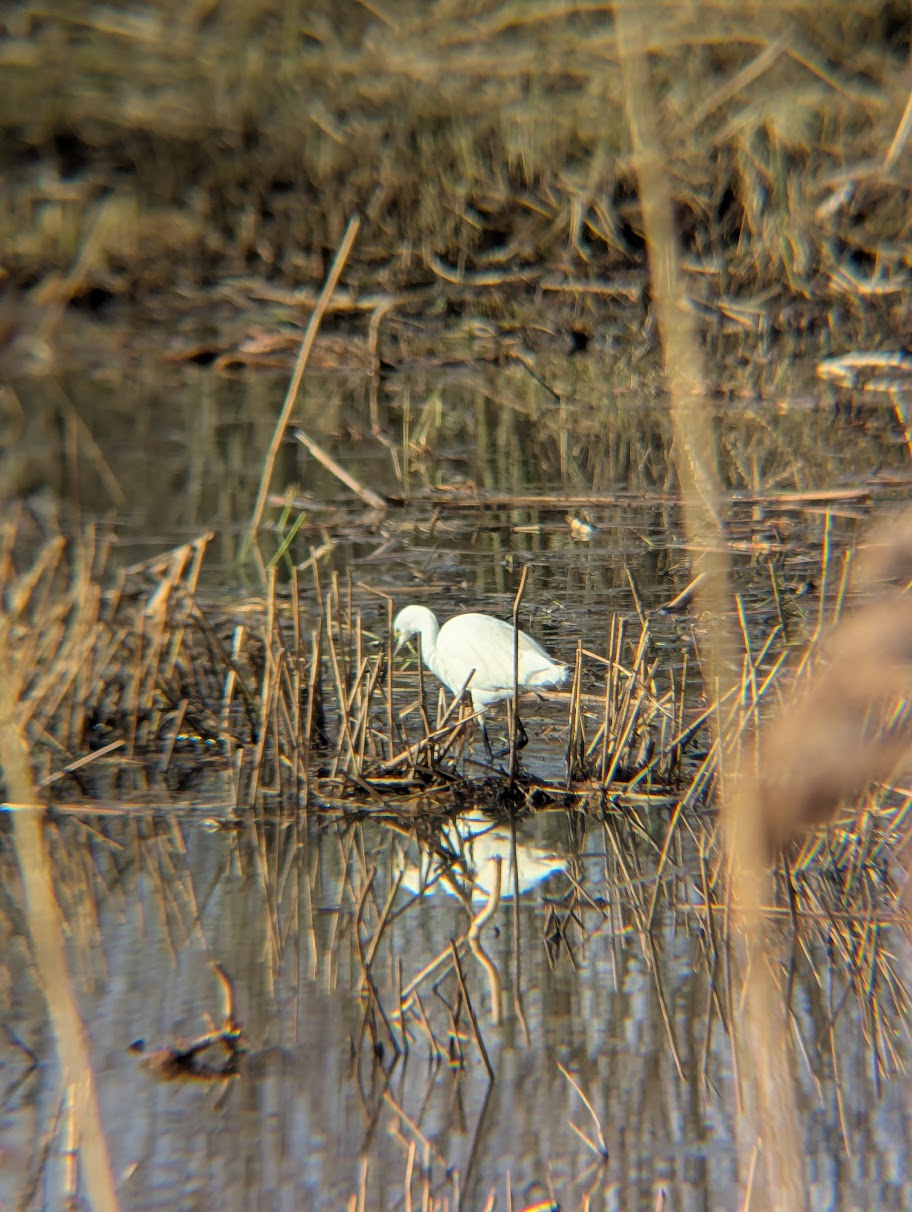
As we stood listening to the reeds rustling in the wind, we were treated to the song of a Song Thrush – fluty, repeating notes with each phrase repeated three or four times in quick succession. These talented mimics can sing over 100 different phrases! And just as we were about to turn back, a sudden burst of sound came from the water’s edge – a Snipe, calling with its sharp “chick-chick” before zigzagging off into the air. This secretive wader is known for its amazing display flight, where its tail feathers vibrate to produce a haunting ‘drumming’ sound.
To read more about the work being done as part of the Ouse Burn Way, please click here.
